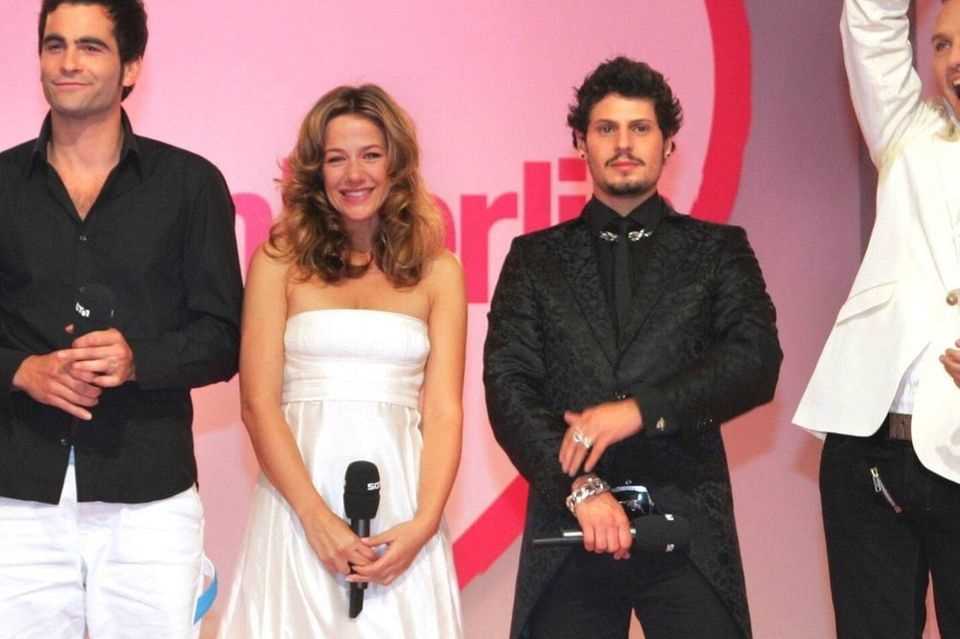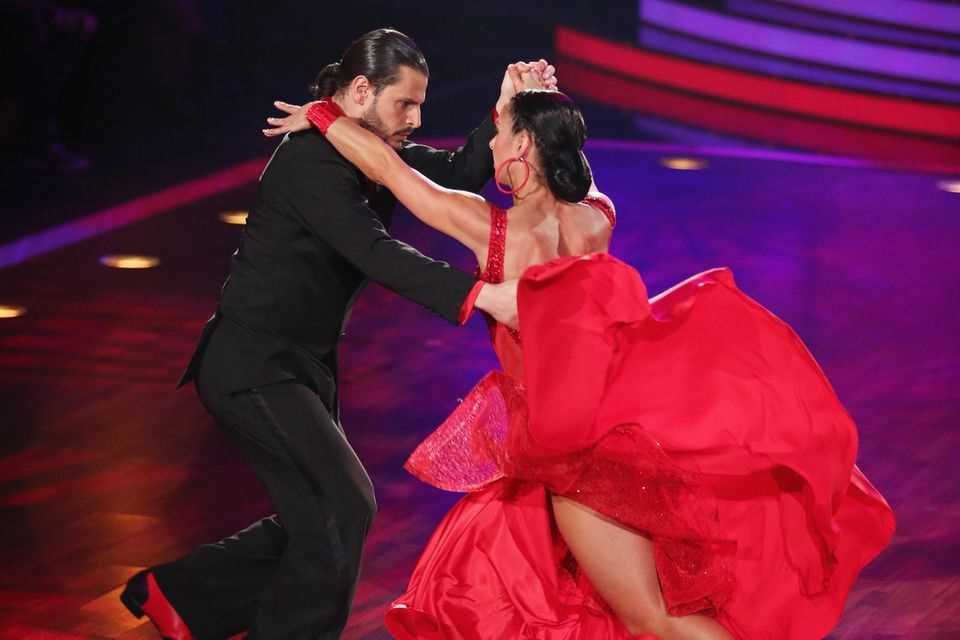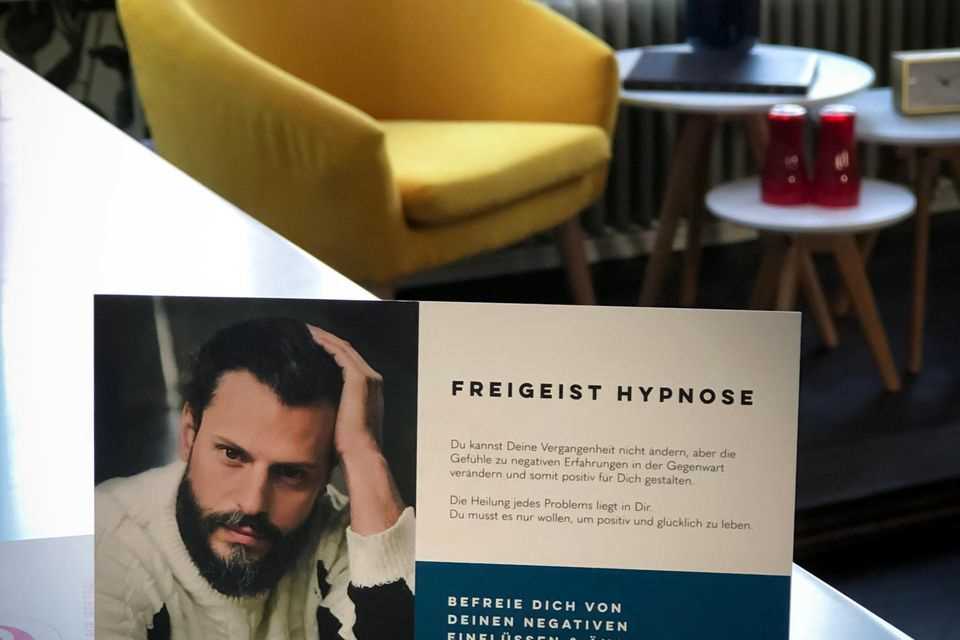Trembling, fainting spells, blackouts: actor Manuel Cortez explains on “Mental Health Matters” how debilitating an anxiety disorder can be. +++ TW: The subject of anxiety disorder is dealt with in the interview. +++
“I was waging a war against myself, so to speak,” says Manuel Cortez, 41, in the GALA “Mental Health Matters” interview. With this sentence he describes his years of suffering. At the age of about 24 the actor, who became famous for “In Love in Berlin”, was confronted with his anxiety disorder for the first time:
“It happened one night before I had to fly to Ibiza to film. […] I went to the bathroom and from one second to the next I got a very strange, restless feeling inside of me. Everything felt so unreal […]. Everything was suddenly so strange. ”
In an interview, he tells how Manuel experienced his first panic attack, why the end of “Verliebt in Berlin” was a key experience and why participating in “Let’s Dance” felt like a torture run.
“Mental Health Matters”: Manuel Cortez speaks openly about his anxiety disorder
GALA: How was this feeling of fear expressed physically?
Manuel Cortez: My heart was racing, I was dizzy and nervous. I wanted to feel my pulse and felt my heartbeat fast. Then I got even more nervous and sick. My hands became ice cold, I started shaking all over. That was my first panic attack.
I couldn’t deal with this fear that came out of nowhere because I didn’t know this feeling and was extremely insecure. With this experience the fear began to be with me all the time.
Have you always had the same physical symptoms?
Yes, most of the time. I noticed that fear was returning from the following early warning signals: tingling, numb hands; a tunnel vision in which one notices that reality and perception are limited; Racing heart, shortness of breath and nervousness; a spreading sensation of pressure on the chest.
In bad cases – but I only had them three or four times – I have experienced paralysis of the limbs and fainting spells.
How did the anxiety disorder affect your job back then?
I was terrified that people on set would notice what was wrong with me. That’s where all the pressure comes together: You don’t want anyone to see how bad you are. You’re scared of losing your job – especially as an actor. If you are sick, the whole film can just burst. And I didn’t want the word to get around in the industry and prevent me from getting any roles. It was a constant cycle that made the fear grow bigger and bigger.
Were you ashamed of your fear in front of the others?
At first I didn’t want others to know about the disease because I didn’t want to destroy my image in society.
I was afraid of being crazy, but I was also afraid of going crazy myself – before I knew I had an anxiety disorder. We live in a performance society in which psychological suffering is frowned upon. We have to function, perform and present at a high level. If we can’t, we are in short supply. Today there are more and more people who talk about their psychological suffering, but unfortunately we are still at the very beginning.
Has fear limited your life?
Many of those affected try to avoid fear-inducing situations and to build their lives around fear. Not me. Fortunately, I was always someone who did not allow myself to be restricted in moments of fear – because of my anger, my defiance and my courage, which I thank God for. Nevertheless, I had to constantly face the conflict with my fear.

In 2006, Manuel Cortez played crazy alongside Alexandra Neldel (center) in the Sat.1 telenoveal “Verliebt in Berlin” Advertising professional “Rokko Kowalski”.
© imago images
“In love with Berlin”: After the series ended, Manuel suffered a burnout
And the constant confrontation did not reduce the fear?
No, and that’s exactly what cost me a lot of strength. The problem was: I didn’t get to the bottom of the causes and triggers of my fear, but simply opposed my fear.
I was waging a war against myself, so to speak. But such a condition is not the solution to the problem. As a result, years later I came to a physical end point where I no longer had any strength.
Was there a key experience where you noticed that you couldn’t go on living like this – maybe your burnout right after “In love with Berlin”?
Yes, that was one of the key experiences. I learned things about myself and my issues in stages, from anxiety attack to anxiety attack – that was a long way. What helped me the most at first was realizing that I was “just” scared. That way I was able to better classify what was wrong with me and I knew that fear actually couldn’t do anything to me.
When did you get professional help?
Only after many years. I tried therapies, but they only helped me deal better with physical symptoms such as shortness of breath or nervousness. This enabled me to detect panic attacks earlier. That was a great help, but I was far from cured; because the therapies did not get to the bottom of what triggered my fears.
“Let’s Dance”: “From the second show onwards, participation was a torture run for me.”
After learning to cope better with your symptoms, you relapsed during your 2013 Let’s Dance attendance. Suddenly the fear was there again.
Yes, when “Let’s Dance” started, I thought I had my fear under control. But that was an illusion. If you take part in this show, you will be publicly judged and sometimes humiliated as a candidate. You stand in front of the jury, you gave everything, but because of the show effect you get pretty heavy criticism.
What did this type of assessment do to you?
You stand there in front of an audience of millions and you have to listen to how poop you are.
This triggered all of my triggers in me, which in turn are responsible for my anxiety disorder. From the second show onwards, participation was a torture run for me. At the beginning of every show, I didn’t know whether I would survive it or get a blackout or a panic attack.

© Getty Images
Nevertheless, from show to show I was able to free myself more and more of these fears with the help of hypnosis. In the end I even won, but it was an incredible effort.
What were the triggers that triggered your anxiety disorder and panic attacks?
The rejection by my father was a big issue and so was the disrespect
– to be treated from above by others; to be laughed at and marginalized by others and to be conveyed by others to be of less value. Loss was another big issue; to stand alone, not being able to trust anyone. My dyslexia was one of them. Because of her, I always had great difficulties at school; I’ve always been the outsider; I always did not fit in with a particular system.
Through hypnosis, Manuel Cortez recognized the trigger for his fear
You recognized these triggers through hypnosis. What else did you learn?
I have learned that neither the person standing in front of me nor the situation itself are the real triggers for fear. Both remind me only of my experiences, my traumas from childhood and adolescence, which in turn trigger my fears. Working through these triggers was something that I later also made professionally.
Now you have your own practice called “Free Spirit Hypnosis”. How is people being helped there?
Clients come to the practice with emotional deficits and disharmonies. Packages can be booked here. It starts with analysis coaching lasting ten to 20 hours – depending on the client. This is a classic coaching unit with behavioral approaches, consisting of mindfulness, meditation exercises, causal research and the questions: Where do I come from? What early childhood influences do I have? What triggers from the past make me react so emotionally today?

© private
This is used to create a timetable, i.e. a motion mind map, with which you can start a 1-to-1 conversation. Here, in hypnotic sessions, the wounds and conflict experiences that are responsible for the emotional disharmonies are dealt with in detail.
How are you today with your fear?
After 17 years of experience, I can say: Very good! Sure there are days when I don’t feel good, when old patterns of my anxiety come up, but I haven’t had a panic attack in a long time. I have lived without these physical symptoms for many years.
But I will never be free from fear, it is not one. Fear is part of life.
But by now I know my triggers and have learned to deal with them and to see fear as my ally and not as my enemy.
Help with anxiety disorders
Are you starting to see signs of an anxiety disorder? With the free Online advice Deutsche Angst-Hilfe eV will help you quickly and anonymously. Further information on the disease and self-help groups can be found on the Foundation website.
Source used:own interview
This article originally appeared on GALA.de.
